50 years of history of online stores from Ecwid
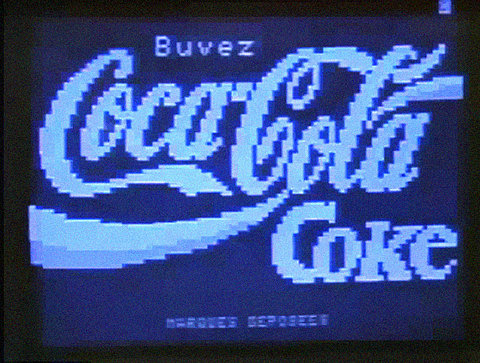
We are accustomed to online shopping as something self-evident, simple and accessible to everyone. Today, using Ecwid, creating your store is no more difficult than inserting YouTube videos on your site. Two years ago, his own comic book store set up and launched an eight-year-old boy - he did it secretly from his parents, just by watching his father set up his adult store.
For 2011, there is nothing surprising, but it took fifty years of research and development to create such a simple and effective system as Ecwid. Each textbook on restaurant business begins with a simple secret of all restaurateurs. Serving dishes is 50% of its price and success. Visitors come to the restaurant for the atmosphere to the same extent as for a meal. This rule applies to shopping, because they also belong to the entertainment industry.
')

But bad luck, the buyer no longer wants to go to the shops. And this is just the flowers, according to our forecasts, in ten years time users will rarely go to the “online Internet” - everyone will keep a safe offline version and only update it if necessary. In such conditions, the store must itself come to the buyer. Let's see how the stores have come this way.
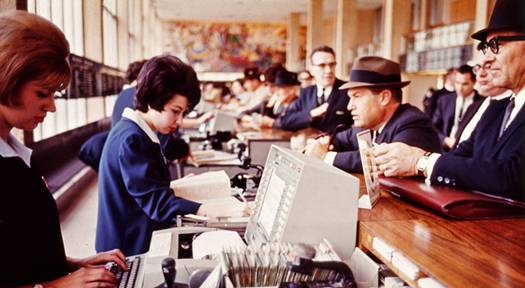
In 1960, American Airlines and IBM began to create a system to automate their flight reservation process - SABER (Semi-Automatic Business Research Environment - semi-automatic equipment for commercial research). This was the first experience of creating an e-commerce system. The SABER system has made air travel more accessible to ordinary citizens, helping them navigate fares and flights, the number of which has steadily increased. This system could perform integrated revenue management, allowing airlines to maximize profits through price manipulation based on availability. By 1964, the system could reserve seats for 26,000 passengers in one day. American Airlines terminals connected to SABER via telephone lines were already located in more than fifty cities.
According to the legend, it was SABER who inspired Stanley Kubrick to his Space Odyssey 2001 - do you remember the space station operators behind the terminals there? The system was so effective that its descendants are still used around the world - for example, in Russian Railways or Aeroflot. But a truly electronic retail store appeared almost twenty years later. In 1979.
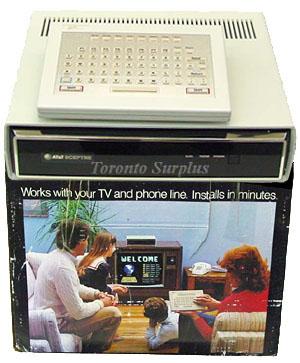
There was no Internet yet, but I already wanted to buy without leaving home. Especially in rainy England, where Michael Aldrich especially hated shopping and decided to connect the TV, telephone and keyboard to an almost personal computer in order to put an end to the problem once and for all. The system was called VIDEOTEX.
The simplicity and convenience of the interface (Full analogue of BBS) ensured Videotex worldwide popularity. But Aldrich did not stop there and developed a set-top box into a full-fledged analogue of personalka.

The Teleputer3 advertising brochure produced an indelible impression for the early eighties: 128kb of memory, two five-inch drives made it possible to record up to 500kb of information, and its own monitor output as many as 7 different colors. On board was its own OS and a set of office programs, from a tabular processor to databases. If desired, it was possible to seriously pull up the graphics, with the standard 80x40 characters an additional video card raised the image to fantastic 256x240 pixels. But the real pride of the system, of course, was a high-speed modem at 9600 bps. And all this before the appearance of the IBM PC!

Videotex was such a success with users that instantly received recognition around the world. Already in 1983, Videotex worked in Canada and Australia, but the USSR brought the first really big money to the company - in 1981 the Soviet government ordered 247 Teleputers to service the Siberian gas pipeline. The government liked the system so much that after Siberia, Teleputers began to be mass-produced under license in a new plant in Poland, immediately with a Cyrillic keyboard - thus, it was Teleputer that became the first Soviet color PC.

And the most appreciative users were the French. Already in 1980, the French company Minitel actually creates its own pro-Internet. In their videotext modification, the subscriber connects to the tele-information system through a small terminal with a screen and a keyboard. Using it, you can get about 13,000 various services, in particular, to clarify the schedule of suburban trains, find out stock quotes, make an order for certain goods and services, chat with other Minitel users in a chat.
The device was issued to each resident in the post office for free. A monthly subscription fee is paid for use, it depends on the type of apparatus and the nature of services. After a couple of years, as an experiment, the network management decided to create a personal account for each user so that he could make purchases and pay for services directly from his terminal. And this innovation provided the Ministrate with absolute popularity - in fact, France had a full-fledged Internet as early as 1980, with websites, blogs, chat rooms and online stores. Despite the limited graphic capabilities, almost every “site” on the net differed in its original design.
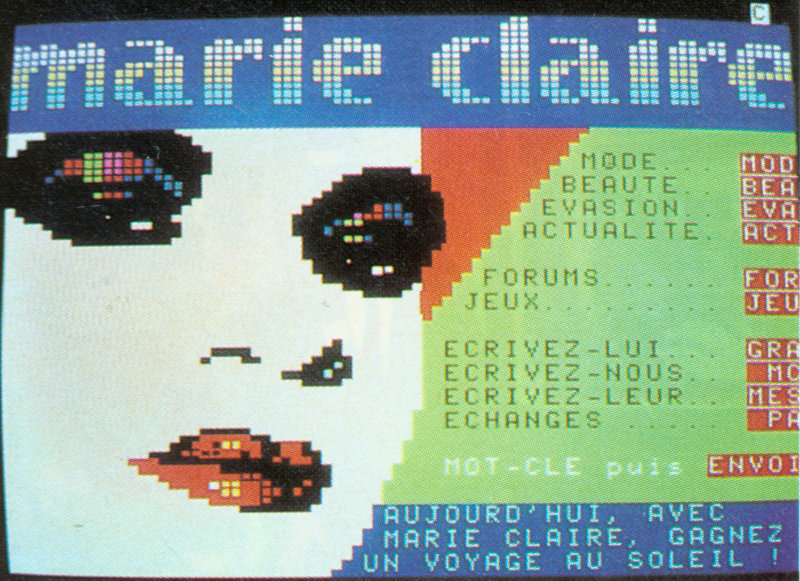
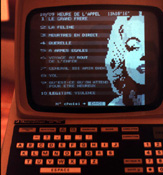

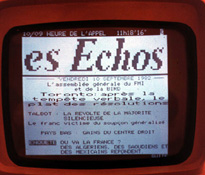

At its peak, in 1997, six million terminals were simultaneously connected to a minimizer, and they carried out transactions for $ 750 million. Of course, the system was severely hampered by the Internet, but even in 2009, the minitetel registered 10 million connections to the system in a month. You can imagine how much indignation causes the decision of Franz Telecom to completely stop the system on June 30, 2012.
To show how Minitel was ahead of his time, enthusiasts from the USA were even able to attach a webcam to it and go on Skype:

In 1990, Tim Berners-Lee created the Internet by solving the hardware problem of online shopping forever. Unlike Minitel and Videotex, the Internet is an open network, there is no one company controlling the content and the terminals themselves. Now, any user can create their own websites without asking permission from the network owner.
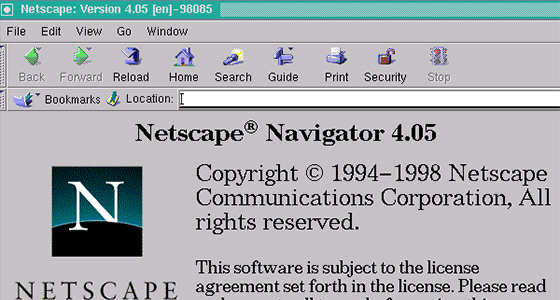
In 1994, Netscape launches the first commercial browser, Netscape Navigator, and adds the final touch to the Internet, creating SSL protocol - now all purchases and transactions can be reliably protected by encryption. Pizza Hut immediately begins a large-scale advertising campaign, the first to launch a full-fledged online store. Ordering pizza on the Internet has become a sensation, but it never caught on - yet it turned out to be easier to order food by phone.
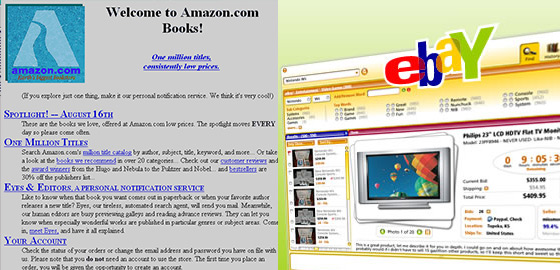
And only in 1995, online trading begins, as we know it. Amazon.com starts.

In 1999, the Nokia 7110 comes out - advertised as the first phone with Internet access (which is not quite so), it also becomes one of the symbols of popular culture after its older brother, nokia 8110, hits the film The Matrix.
And on March 10, 2000 the “dotcom crisis” began. The dotcom bubble is breaking, and many players have to leave the market. The Nasdaq index drops five times. But some online retailers make a profit and from this situation, having started to make huge discounts and churn prices, Amazon and Ebay are not only experiencing a crisis, but also increasing their share.
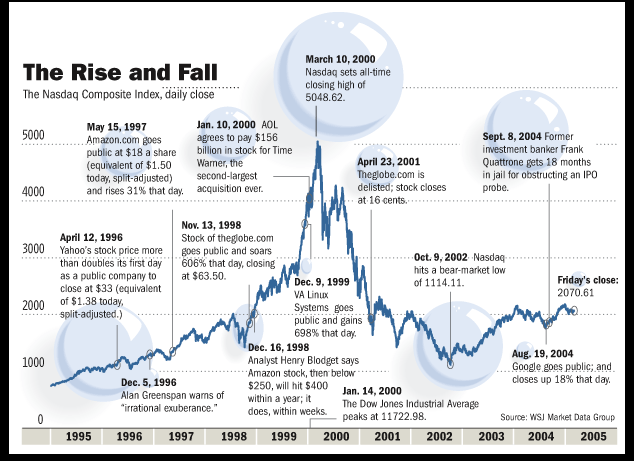
Although the capitalization of Amazon Inc fell almost to the initial level, sales did not decrease. Revenues by 2008 were $ 15 billion and $ 476 million in net profit. Not bad for a crazy startup of a programmer who miraculously found an investment of $ 300 thousand, because he knew how to predict the future of retail.
By 2011, the online shopping industry has reached the end of the next stage in development. Shops have tried all means of competition, and only a radically innovative solution can win. Users no longer go to Amazon to purchase an mp3 or download a movie - for this they already have iTunes and uTorrent on their computer.

Today, before buying, we make inquiries about the product in Google and ask the opinion of our friends in social networks. And companies no longer compete with each other for the attention of the audience, now their task is to be more popular than funny kittens on Facebook. In such conditions, only the company can go, one step ahead of the competition and one step closer to the users. As at one time did Videotex.
In 2011, 44% of large online stores invested in mobile apps to be closer to users. Shops working with social networks are experiencing unprecedented growth, only Groupon has grown by 468% over the year - the desire to be closer to customers is the main trend in online shopping. The e-commerce industry itself is growing faster than all other retail sectors in the world, from 4.3% in 2004 to 8.6% in 2011. But this is not the main thing - the stores themselves are crowded out by social networks, only one Facebook plans to occupy 50 by 2015 % retail.

RunaCapital is investing not only in nanotechnology and the creation of quantum teleports :) As you see, we are closely following all areas of the Internet. We have something to offer both existing businesses and those who just want to create their own business. This is Ecwid - a platform for easy creation of online stores, has received worldwide fame because of its unique concept. Ecwid is a free shop in the cloud.
The system itself works on the Amazon platform, but it can be used with any site. You just need to insert a couple of lines of code (as usual, insert a YouTube video or Like button), and a full-featured store will immediately appear on the page. (try it yourself: create an HTML page and paste this code here : a demo store will immediately appear there).

It is hard to believe, but a startup born in 2009 in provincial Ulyanovsk has become known around the world. About Ecwid already wrote on Habré almost two years ago, but since then the project has greatly stepped forward. 100,000+ vendors from 174 countries, one of the most widely used e-commerce applications on Facebook, winning the Google contest are all thanks to bold ideas and technological solutions. For example, Ecwid is the only (!) E-commerce solution in the world, fully implemented in AJAX. The store interface responds as quickly as possible to the actions of visitors thanks to the dynamic loading of content. This is a very important point - it is known that delays when loading pages reduce the turnover of online stores.
Today Ecwid can deploy the store right on Facebook and wherever your audience is. As the past fifty years of online shopping have shown, this insignificant advantage is ultimately decisive. Other things being equal, the buyer always chooses the store that is closer. Ecwid is always in one click from the buyer, and this is at least one click closer to competitors.
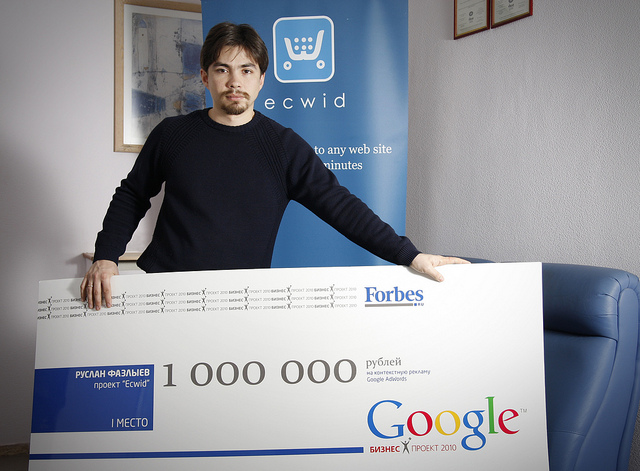
PS
The article used materials from the sites:
www.aldricharchive.com
www.minitel.us
europe.wsj.com
www.ibm.com/ibm100
www.computerhistory.org
whatisthematrix.warnerbros.com
venturebeat.com
www.amazon.com
www.ebay.com
Source: https://habr.com/ru/post/134933/
All Articles